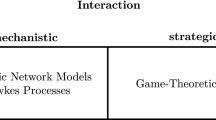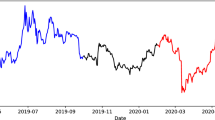Abstract
In this paper, we study the optimal reinsurance-investment problems in a financial market with jump-diffusion risky asset, where the insurance risk model is modulated by a compound Poisson process, and the two jump number processes are correlated by a common shock. Moreover, we remove the assumption of nonnegativity on the expected value of the jump size in the stock market, which is more economic reasonable since the jump sizes are always negative in the real financial market. Under the criterion of mean–variance, based on the stochastic linear–quadratic control theory, we derive the explicit expressions of the optimal strategies and value function which is a viscosity solution of the corresponding Hamilton–Jacobi–Bellman equation. Furthermore, we extend the results in the linear–quadratic setting to the original mean–variance problem, and obtain the solutions of efficient strategy and efficient frontier explicitly. Some numerical examples are given to show the impact of model parameters on the efficient frontier.





Similar content being viewed by others
References
Alvarez ELHR, Matomäki P, Rakkolainen TA (2014) A class of solvable optimal stopping problems of spectrally negative jump diffusion. SIAM J Control Optim 52(4):2224–2249
Bäuerle N (2005) Benchmark and mean–variance problems for insurers. Math Methods Oper Res 62:159–165
Bi J, Guo J (2013) Optimal mean–variance problem with constrained controls in a jump-diffusion financial market for an insurer. J Optim Theory Appl 157:252–275
Fleming WH, Soner HM (1993) Controlled Markov Processes and Viscosity Solutions. Springer, Berlin
Irgens C, Paulsen J (2004) Optimal control of risk exposure, reinsurance and investments for insurance portfolios. Insurance Math Econ 35:21–51
Li D, Ng WL (2000) Optimal dynamic portfolio selection: multi-period mean–variance formulation. Math Finance 10:387–406
Liang Z, Bayraktar E (2014) Optimal proportional reinsurance and investment with unobservable claim size and intensity. Insurance Math Econ 55:156–166
Liang Z, Yuen KC, Guo J (2011) Optimal proportional reinsurance and investment in a stock market with Ornstein–Uhlenbeck process. Insurance Math Econ 49:207–215
Luenberger DG (1968) Optimization by vector space methods. Wiley, New York
Markowitz H (1952) Portfolio selection. J Finance 7:77–91
Ming Z, Liang Z (2016) Optimal mean–variance reinsurance with common shock dependence. ANZIAM (in press)
Promislow D, Young V (2005) Minimizing the probability of ruin when claims follow Brownian motion with drift. N Am Actuar J 9(3):109–128
Protter PE (2004) Stochastic integration and differential equations, 2nd edn. Springer, Berlin
Schmidli H (2001) Optimal proportional reinsurance policies in a dynamic setting. Scand Actuar J 1:55–68
Zhou X, Li D (2000) Continuous-time mean–variance portfolio selection: a stochastic LQ framework. Appl Math Optim 42:19–33
Acknowledgments
The authors would like to thank the anonymous referees for their careful reading and helpful comments on an earlier version of this paper, which led to a considerable improvement of the presentation of the work. Zhibin Liang and Caibin Zhang are supported by National Natural Science Foundation of China (Grant No. 11471165) and Jiangsu Natural Science Foundation (Grant No. BK20141442). Junna Bi is supported by National Natural Science Foundation of China (Grant No. 11301188 and 11571189), Specialized Research Fund for the Doctoral Program of Higher Education of China (Grant No. 20130076120008), and Shanghai Natural Science Foundation of China (Grant No. 13ZR1453600). Kam Chuen Yuen is supported by a grant from the Research Grants Council of the Hong Kong Special Administrative Region, China (Project No. HKU 7057/13P), and the CAE 2013 research grant from the Society of Actuaries - any opinions, finding, and conclusions or recommendations expressed in this material are those of the authors and do not necessarily reflect the views of the SOA.
Author information
Authors and Affiliations
Corresponding author
Rights and permissions
About this article
Cite this article
Liang, Z., Bi, J., Yuen, K.C. et al. Optimal mean–variance reinsurance and investment in a jump-diffusion financial market with common shock dependence. Math Meth Oper Res 84, 155–181 (2016). https://doi.org/10.1007/s00186-016-0538-0
Received:
Accepted:
Published:
Issue Date:
DOI: https://doi.org/10.1007/s00186-016-0538-0
Keywords
- Mean–variance criterion
- Hamilton–Jacobi–Bellman equation
- Investment
- Proportional reinsurance
- Jump-diffusion process
- Common shock




